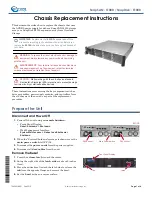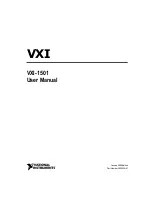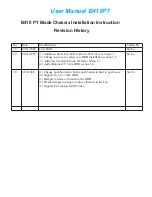
© National Instruments
|
5-19
Measurements Using Quadrature Encoders
The counters can perform measurements of quadrature encoders that use X1, X2, or X4
encoding. A quadrature encoder can have up to three channels—channels A, B, and Z.
•
X1 Encoding
—When channel A leads channel B in a quadrature cycle, the counter
increments. When channel B leads channel A in a quadrature cycle, the counter
decrements. The amount of increments and decrements per cycle depends on the type of
encoding—X1, X2, or X4.
Figure 5-17 shows a quadrature cycle and the resulting increments and decrements for X1
encoding. When channel A leads channel B, the increment occurs on the rising edge of
channel A. When channel B leads channel A, the decrement occurs on the falling edge of
channel A.
Figure 5-17.
X1 Encoding
•
X2 Encoding
—The same behavior holds for X2 encoding except the counter increments
or decrements on each edge of channel A, depending on which channel leads the other.
Each cycle results in two increments or decrements, as shown in Figure 5-18.
Figure 5-18.
X2 Encoding
•
X4 Encoding
—Similarly, the counter increments or decrements on each edge of
channels A and B for X4 encoding. Whether the counter increments or decrements depends
on which channel leads the other. Each cycle results in four increments or decrements, as
shown in Figure 5-19.
Figure 5-19.
X4 Encoding
Channel Z Behavior
Some quadrature encoders have a third channel, channel Z, which is also referred to as the index
channel. A high level on channel Z causes the counter to be reloaded with a specified value in a
specified phase of the quadrature cycle. You can program this reload to occur in any one of the
four phases in a quadrature cycle.
Ch A
Ch B
Co
u
nter V
a
l
u
e
7
7
6
5
5
6
Ch A
Ch B
Co
u
nter V
a
l
u
e 5
6
8
9
7
5
6
8
9
7
Ch A
Ch B
Co
u
nter V
a
l
u
e
5
6
8
9
10
10
11
11
12
12
1
3
1
3
7
5
6
8
7
9












































